at the Groenige Museum, in Bruges, 2001-2
with Tim van Steenbergen
photographs by Bjorn Tagemose
Framed explores the hypothesis that 15th century Flanders was the birthplace of fashion and that Flemish Primitive paintings, depicting
sumptuously dressed Virgins, could be the first fashion images with Mary as the model.
The combination of the lucrative cloth trade and the presence of the Burgundian court made 15th century Bruges a centre for European wealth and culture.
Lavish spending encouraged not only patronage of the arts but also a new relationship to dress; the rich merchant class began to display their fortunes through their clothing.
The fashion historian Elizabeth Wilson states that for the first time clothes were changed for reasons of style and display rather than because they were worn out. It was during this period that what we understand as a fashion consciousness first developed.
The elaborate clothing of the Holy Virgins represented in works such as Jan van Eyck’s ‘Madonna with Canon van der Paele’ testify to this new pleasure taken in clothing.
Central to the spirtual imagery the Virgin sits enthroned lavishly adorned as the Queen of Heaven.
Whilst a devotional painting – the Madonna’s iconic status also made her the ideal mannequin for displaying the secular wealth of Bruges’ haute couture.
Framed connects the historical conception of fashion in Flanders with its re-emergence, since the 1980’s, as an innovative and Internationally established centre for fashion design and haute couture.
Tim van Steenbergen’s dress designs were inspired by Hugo van der Goes’ ‘Death of a Virgin’. The Virgin at the center of this painting is surrounded by mourners their clothing envelopes her, extending on all sides to the edge of the painting.
Conceived as tableaux- dresses they are attached to frame structures to be hung on the wall or worn when off the frame.
Made from Flemish linen and using advanced techniques of 21st century haute couture craftsmanship the dresses parallel in contemporary style the finery of the 15th century.
Four black and white photographs make up the final version of “Framed”.
The model is re-incorporated into the (framed) dresses and photographed in poses loosely related to the life of the Virgin. The photographs play on the hypothetical ambivalence of the double role depicted by the Virgin suggested in the Flemish Primitives, the Madonna and fashion model.
Inaugurated in the Groenige Museum the dresses were exhibited alongside the photographs. The photographs remain within the museum collection, a 21st century re-working of their Flemish predecessors.
The dresses remain as fashion to be worn or hung on the wall.
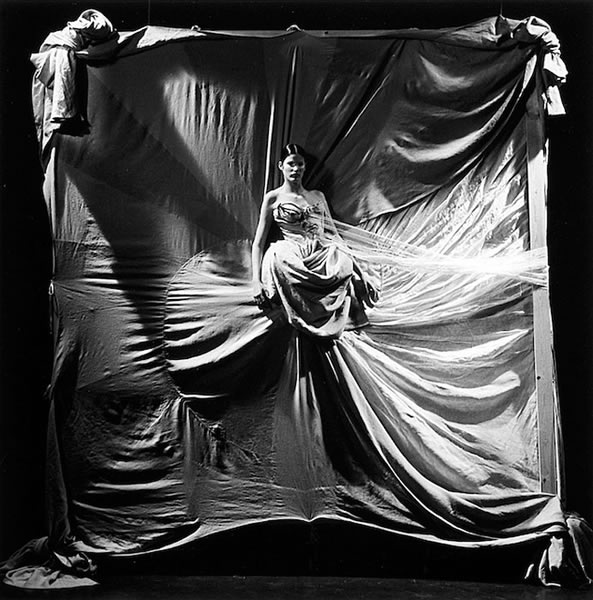 Queen of Heaven
Queen of Heaven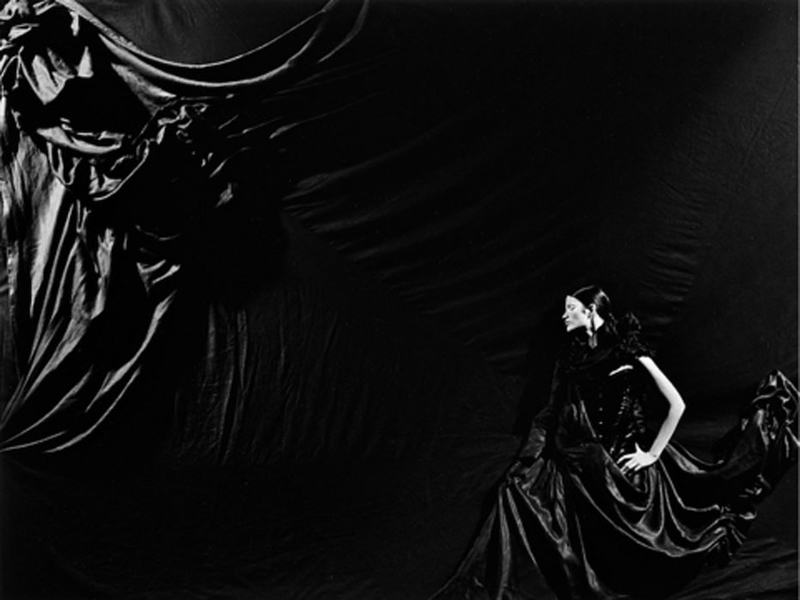 The Annonciation
The Annonciation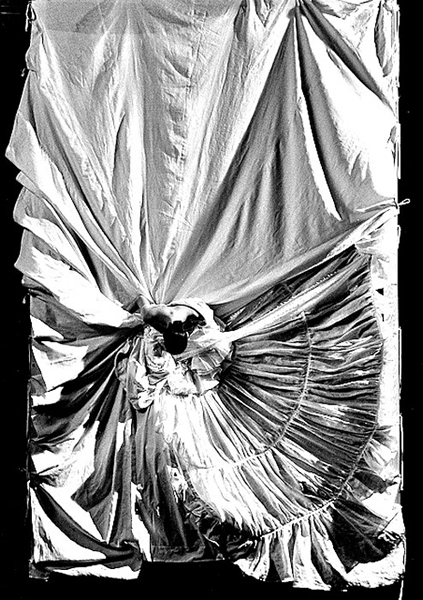 Death of the Virgin
Death of the Virgin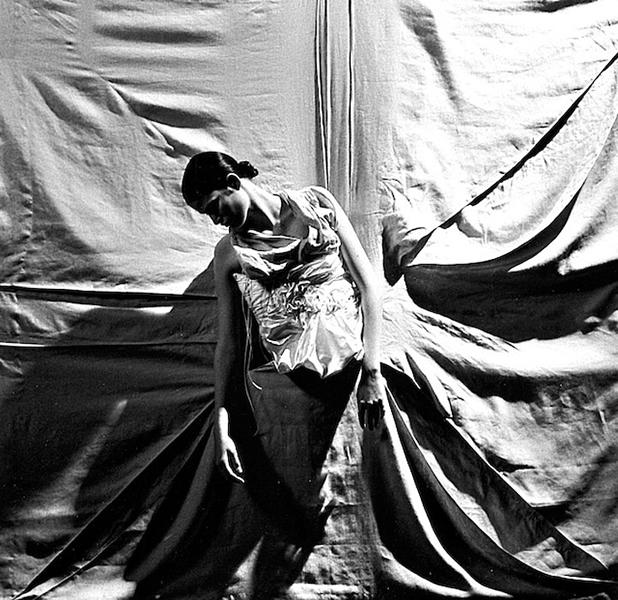 The Compassion
The Compassion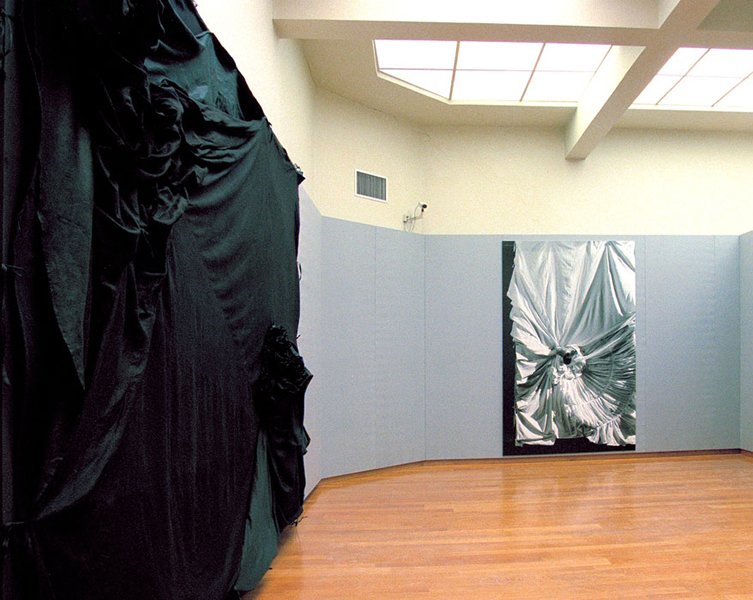 Framed,
Framed, 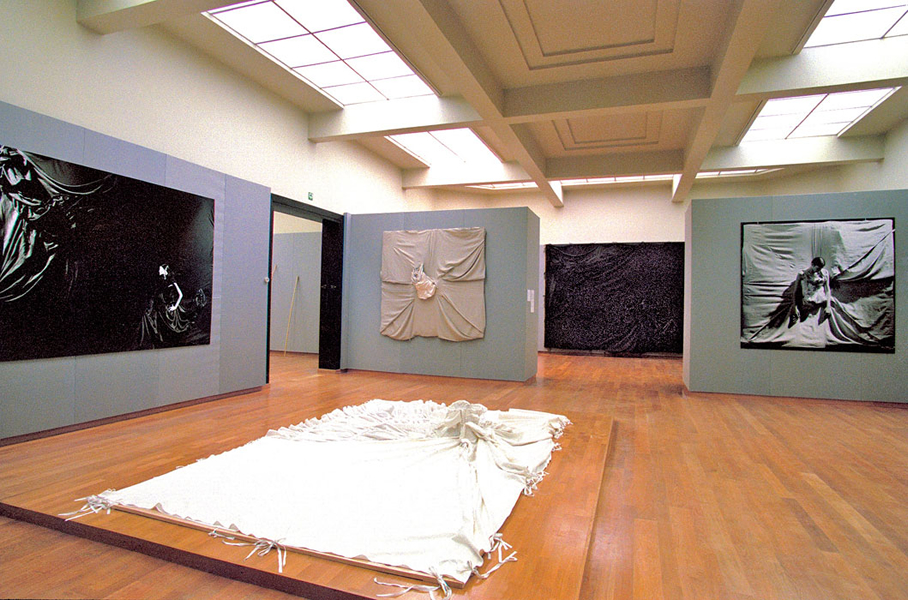 Framed,
Framed, 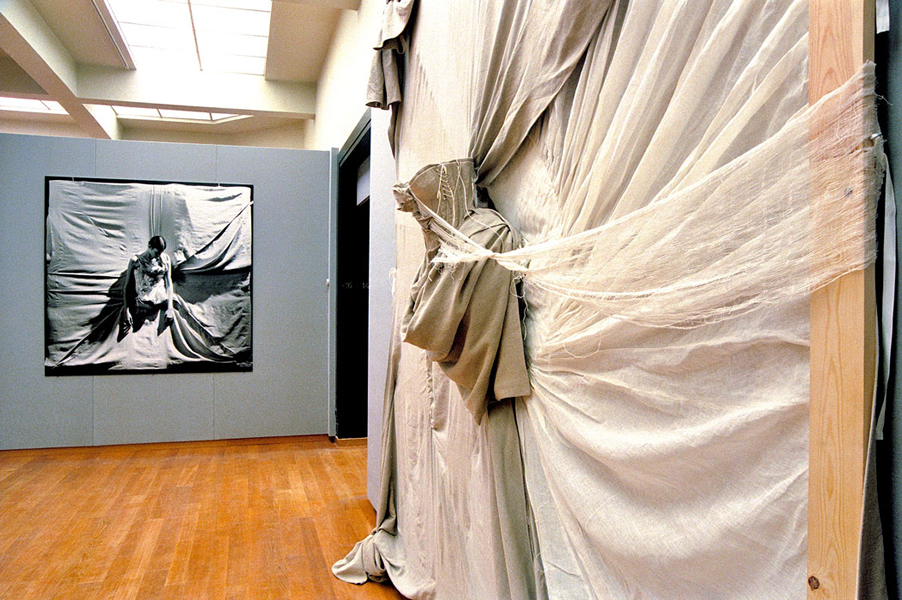 Framed,
Framed,